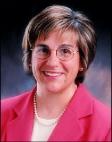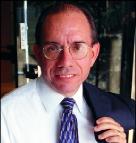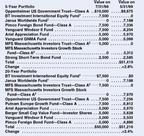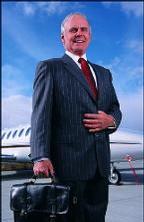Article
Model portfolios: The stocks--only choices are ahead---way ahead
Author(s):
The stocksonly choices are aheadway ahead
Model Portfolios
Last year, three financial pros set up model portfolios.Their returns have ranged from flat to phenomenal.
By Leslie Kane, Senior Editor
The stocks-only choices are aheadway ahead
Wall Street continued to make many investors rich in the 12 months endedJuly 31, 1999. But not everyone was invited to the party.
Last year, we asked three investment experts to each construct two portfolios,*one with a five-year time horizon, the other with a 20-year time frame.Each portfolio began with $50,000 of "play" money. Every timewe've checked on their progress, financial adviser Fred L. Dowd's all-stockportfolios have been ahead of the pack--and ahead of the Standard &Poor's 500 Stock Index, which rose 20.2 percent during the period. The otheradvisers' portfolios, which contained at least some bond funds, have laggedwell behind both Dowd's and the S&P.
Of course, Dowd's all-equities approach would be too risky for many people.And in a sustained bear market, the more balanced, cautiously constructedportfolios featured here could look much better than Dowd's.
The difference in returns highlights a vital lesson: Your choice of financialadviser and your risk tolerance determine the investing approach and yourprobable results. So speak with more than one adviser, and understand hismoney management philosophy.
Paula Hogan
Hogan Financial Management, Milwalkee


What happened?
5-Year Portfolio
Hogan says she's satisfied with the minimal returns on this portfolio,but only ultracautious investors would be likely to feel the same.
The all-bond portfolio did beat the 1.3 percent average gain of the morethan 4,000 bond funds tracked by Morningstar for the same time frame. Still,you might have done as well as Hogan--if not somewhat better--by keepingyour assets in money-market funds or even a bank savings account.
Hogan feels the portfolio accomplished her goal, though. "If youneed cash within five years, don't risk principal by investing in equities.If you're forced to sell when the market's down, you'll be caught short.An all-bond portfolio isn't exciting, but it preserves capital over shorttime periods. This portfolio maintained purchasing power while minimizingtaxes."
20-Year Portfolio
"The Standard & Poor's Depositary Receipts in this portfolio,up 20.1 percent, captured most of the market surge. The other funds draggeddown returns, yet most beat their benchmarks. For example, the VanguardTotal International Stock Index Fund beat the average of foreign-stock mutualfunds tracked by Morningstar by 3.5 percent.
"The bonds acted as a buffer for market volatility, safeguardingthe investor against a possible drop in stock prices," says Hogan.
"Since the funds are tax-advantaged, the actual gains are superiorto those of funds with similar returns but no tax benefits," adds Hogan."The fixed-income holdings throw off tax-exempt income. The stock portionis invested in passively managed index funds, whose extremely low turnoverrates minimize distributed capital gains."
That's all true. Moreover, the poorly-performing small-cap value andinternational sectors could surpass US market growth in coming years, whichwould boost total returns. Still, the portfolio contains only about 50 percentequities, which is conservative for a 20-year portfolio. With that muchtime, you'd probably do better to be more aggressive and keep a greaterpercentage of your assets in stocks and stock mutual funds, assuming you'rewilling to accept the extra risk. Hogan comments: "It's easy to overestimateyour tolerance for downside volatility when the markets are good."
*See "Where the pros would put $50,000," Nov. 9, 1998 (availableat )
Everen Securities Inc.
Encino, CA


What happened?
5-Year Portfolio
This portfolio gained modestly, thanks mostly to its domestic stock funds.The Ariel Appreciation Fund was the top performer. The fund focuses on mid-capgrowth and value companies, and gained almost 20 percent in the year wetracked it. The newly added Janus Worldwide Fund buoyed the portfolio inthe two months it was included. While foreign markets did poorly overall,most selections in this portfolio underperformed their peers.
Blame for the low returns lies partly with the funds' initial loads."If you invest through an adviser, you can often buy shares at netasset value," says Venezia.
While the portfolio protected principal, you could have achieved similarreturns and incurred less risk with an all-bond fund.
20-Year Portfolio
Gains were anemic. Again, growth occurred only in the funds that investedin domestic equities, excluding the recent addition of the Janus WorldwideFund. The portfolio was appropriately aggressive, with approximately 75percent of the holdings in stocks, and contained foreign funds and domesticsmall-, mid-, and large-cap holdings.
Trouble is, some choices performed badly. Putnam Europe Growth laggedits benchmark, and BT Investment International Equity Fund fizzled afterfour years of topnotch gains. Given that close to half the portfolio wentto US stocks, investors could have expected higher returns.
Still, Venezia would hang tough with his choices. "The portfoliohas low volatility and is well diversified," he says. "One-yearreturns do not reflect the potential over 20 years. I expect the internationalequity funds to shine over the long term.
"In addition, small-cap value stocks have lagged large-company equities,but I anticipate that they'll rise in a few years. That would have a positiveimpact."
Fred L. Dowd
The Fred L. Dowd Co., Casper, WY


What happened?
5-Year Portfolio
This portfolio beat the S&P 500 Stock Index by 24.2 percent, an impressiveachievement. "I chose companies in industries and product sectors thatare creating the greatest positive changes in the workplace and in our personallives," says Dowd.
The holdings were weighted toward telecommunications and technology,both strong sectors. America Online gave the portfolio its biggest boost.The company completed its purchase of Netscape, maker of the popular Webbrowser, which will help broaden AOL's global audience and accelerate thegrowth of e-commerce.
The big loser was Rite Aid, which Dowd would replace if he were to keepthe portfolio going. "Rite Aid's earnings are down, and I foresee problemsfrom competitors' selling pharmaceutical products online," says Dowd."Home Depot's earnings have been steadily increasing, and in early2000, consumers will be able to purchase its products online."
20-Year Portfolio
The 50.2 percent gain here would be the envy of most mutual fund managers.Again, telecommunications and technology, as well as software, paid offbig.
"I continue to believe in growth stocks," says Dowd. "Oureconomy is strong, and I feel that all signs point to ongoing expansion."Still, Dowd would ditch a couple of dogs. "If I were continuing thisportfolio, I'd sell Mylan Laboratories--earnings are down, and it's thefocus of an antitrust suit--and replace it with Merck, whose earnings havebeen on the rise," says Dowd. "I'd also replace Hillenbrand, whoseshare price is falling, with Anheuser-Busch, whose earnings are up and whosemanagement is executing its business plans well."
Totals for some holding in all portfolio tables are approximate, dueto rounding. All dividends were reinvested.
Sources: Morningstar, Dow Jones
Editor's Note: Additional research for this series was provided by FactChecker Vicki F. Brentnall.
Leslie Kane. Model portfolios: The stocks--only choices are ahead---way ahead.
Medical Economics
Oct. 25, 1999;76:128.





